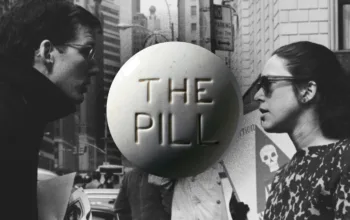Republicans are losing their fight to ban drag — at least for now.
Last Friday, a judge in Knoxville, Tennessee, prohibited a prosecutor who threatened to bring criminal charges against drag performers at a nearby college from doing so.
The prosecutor had planned to target the performers using a new state law that, among other things, lists “male or female impersonators” alongside “topless dancers, go-go dancers, exotic dancers, [and] strippers” as forms of speech subject to tight restrictions.
Judge Ronnie Greer, the author of that decision, is a Bush appointee and the second federal judge appointed by Republicans to issue such an order in Tennessee. Greer relied heavily on Judge Thomas Parker’s opinion in Friends of George’s v. Mulroy, an opinion shielding drag artists in Memphis. Parker is a Trump judge.
The question of whether a state can ban drag shows should not be controversial in a nation governed by the First Amendment. A state legislature may not ban standup comedy. Nor could it ban musical theater, kabuki, noh, koothu, or mime. Dressing in clothes conventionally worn by the opposite sex and satirizing gender norms is no less a protected form of expression than any other form of theatre.
And, to their credit, the courts have thus far agreed with this assessment of the Constitution.
According to the Movement Advancement Project, a pro-LGBTQ think tank, two states, Tennessee and Montana, have enacted laws explicitly targeting drag performers. Four others — Florida, Texas, Arkansas, and North Dakota — have laws targeting “adult” performances that can be used to target drag shows and that in some cases have been used to do so.
But these laws have not fared well in court. In addition to the two federal court decisions blocking Tennessee’s anti-drag law, federal courts blocked similar laws in Montana, Florida, and Texas. For now, at least, the First Amendment is holding firm.
That said, there’s no guarantee that judges will continue to protect free speech as these cases advance to higher (and more politicized) courts. As recently as last June, for example, there was strong consensus among federal courts that laws banning gender-affirming care for minors are unconstitutional. That consensus was recently broken, however, by anti-trans decisions in two federal appeals courts.
Still, the First Amendment arguments against laws targeting drag performers are exceptionally strong. And it helps that most of these state laws are so poorly drafted that they should be struck down as unconstitutionally vague.
It is fairly likely, in other words, that, at the very least, the current slate of amateurishly drafted anti-drag laws will continue to fall in court.
Most anti-drag laws are incompetently drafted
Most current state laws attacking drag are likely to fall in court simply because they are unconstitutionally vague. As the Supreme Court said in United States v. Williams (2008), a criminal law is invalid if it “fails to provide a person of ordinary intelligence fair notice of what is prohibited, or is so standardless that it authorizes or encourages seriously discriminatory enforcement.”
This sort of vagueness abounds in state anti-drag laws. Take Florida’s law, for example, which makes it a crime to knowingly admit a “child” to an “adult live performance.” It also allows the state to revoke the operating or liquor license of establishments that violate this prohibition. Using this provision, the state has attempted to revoke an Orlando business’s liquor license after it hosted “A Drag Queen Christmas” show.
The Constitution does allow states to restrict underage access to pornography, strip shows, and other highly sexual material. But even if drag performers were the same as strippers for First Amendment purposes (and they are not), Florida’s law is far too vague for a “person of ordinary intelligence” to figure out what, exactly it bans.
Among other things, the law bars children from any live show that depicts “lewd conduct.” But it provides no definition of that term.
Similarly, Montana’s anti-drag law purports to ban drag performances at public libraries, in public schools, or on any public property “where the performance is in the presence of an individual under the age of 18.” But its definition of who counts as a drag performer is ridiculously vague. The law defines a “drag queen” as anyone, male or female, “who adopts a flamboyant or parodic feminine persona with glamorous or exaggerated costumes and makeup.” It also applies a similarly broad and vague definition to “drag kings.”
How on earth is a judge supposed to determine whether a character is sufficiently “flamboyant” to trigger this statute, or whether their costume is too “glamorous?”
Montana’s law is also so broad that it likely runs afoul of the Supreme Court’s warning that “a law may be overturned as impermissibly overbroad because a ‘substantial number’ of its applications are unconstitutional” under the First Amendment. Flamboyance, parody, glamour, and exaggerated costumes are hardly limited to drag shows — they are, in fact, some of the most common elements in performances of all kinds.
/cdn.vox-cdn.com/uploads/chorus_asset/file/24900532/1488572024.jpg)
Leon Neal/Getty Images
And then there’s Tennessee’s law. It defines any show that is “harmful to minors” (a term that the statute, at least, defines) and that features “male or female impersonators” as a form of “adult cabaret entertainment,” and then it bans this form of entertainment in any location where it “could be viewed by a person who is not an adult.”
First off, let’s talk about the law’s use of the word “could.” Literally any performance “could” be viewed by someone who is not an adult. If a venue cards patrons to make sure they are over 18, an underage person could still sneak in a back door or trick the bouncer with a fake ID. Similarly, if someone decides to host a drag performance in the privacy of their own home, a local child “could” still conceivably walk by the home and catch a glimpse of the show through a window.
As Judge Parker writes in his Friends of George’s opinion, the word “could” means that it is merely “possible” that something could happen. But it is always possible that a child could sneak into literally any place in the state of Tennessee — and thus the state’s anti-drag law applies everywhere in the state.
Similarly, who, exactly, counts as a “male or female impersonator?” What if a male performer wears an article of clothing that resembles both a skirt and a Scottish kilt? How is a judge supposed to determine if this piece of clothing is too feminine? Or, for that matter, does this term encompass a live performance of the Oscar-winning 1993 comedy Mrs. Doubtfire, where a divorced man disguises himself as a female housekeeper to spend more time with his children? What about a live performance of Disney’s Mulan, a story about a woman who disguises herself as a man in order to join the army?
And just how feminine must a male performer be before they cross the line into impersonation? Consider, for example, actor Tom Holland’s famous dance routine to Rihanna’s “Umbrella,” where Holland embraces the kind of hip-gyrating, ass-shaking choreography that will be familiar to pretty much anyone who has watched a performance from a young, hot, female pop star.
If Holland recreated this exact same performance in Tennessee, would he be labeled a “female impersonator?” Would the answer be different if he wore stereotypically male clothing? And, if not, how is a court supposed to determine if his dance moves are too feminine for the state of Tennessee?
In fairness, the Tennessee law does include some limiting language, such as a provision limiting the law’s scope to performances that would offend “the average person applying contemporary community standards.” But this provision raises vagueness problems of its own. Among other things, how is a drag performer supposed to know, in advance, whether a show that is legal in Nashville might run afoul of “contemporary community standards” in a different part of the state?
Tennessee’s and Montana’s inability to pin down what, exactly, they want to ban should be an insurmountable constitutional problem
Setting aside these particular drafting errors, anti-drag lawmakers’ trouble defining what, exactly, they want to ban may very well be an insurmountable constitutional problem — at least assuming that the courts follow existing law.
As Judge Parker explains in Friends of George’s, the First Amendment typically prohibits “content-based” restrictions on speech. In the Supreme Court’s words, “the First Amendment means that government has no power to restrict expression because of its message, its ideas, its subject matter, or its content.”
Restrictions on drag unavoidably run afoul of this rule. The entire point of such laws is to restrict artistic performances because they depict something — performers dressing as members of the opposite sex and satirizing gender norms — that the government believes should not be viewed by all audiences.
That said, the Constitution does, on rare occasions, permit content-based restrictions on speech to exist — but only if those laws survive a difficult-to-overcome legal test known as “strict scrutiny.” Under this test, a law survives judicial review only if it uses the “least restrictive means” to advance a “compelling governmental interest.”
Let’s concede that there are some drag performances, like some Broadway shows or standup comedy routines, that are inappropriate for children. Let’s also assume, as the Supreme Court said in Reno v. ACLU (1997), that states have ‘“a compelling interest in protecting the physical and psychological well-being of minors’ which extended to shielding them from indecent messages that are not obscene by adult standards,’” and that this interest is broad enough to allow states to bar underage audience members from the most sexually charged performances.
Even with this assumption in place, such a law would still need to use the “least restrictive means” to prevent children from seeing those performances. It would need to be precisely drafted to cover only those performances that are genuinely pornographic, or otherwise resemble the limited range of expression that may be restricted under the First Amendment. And the law couldn’t effectively bar adults from seeing such performances.
Indeed, any law that targets drag writ large is unlikely to survive strict scrutiny, because most drag performances are not pornographic or otherwise similar to strip shows. And, at least so far, the federal courts have agreed on this point.
Ultimately, in other words, the question in cases like Friends of George’s is whether judges — and, ultimately, the justices — will carve out an exception to longstanding First Amendment rules because they are squicked out by drag queens. Under existing First Amendment law, there is no basis for anything more than the most narrowly tailored laws targeting the most sexualized performances.



